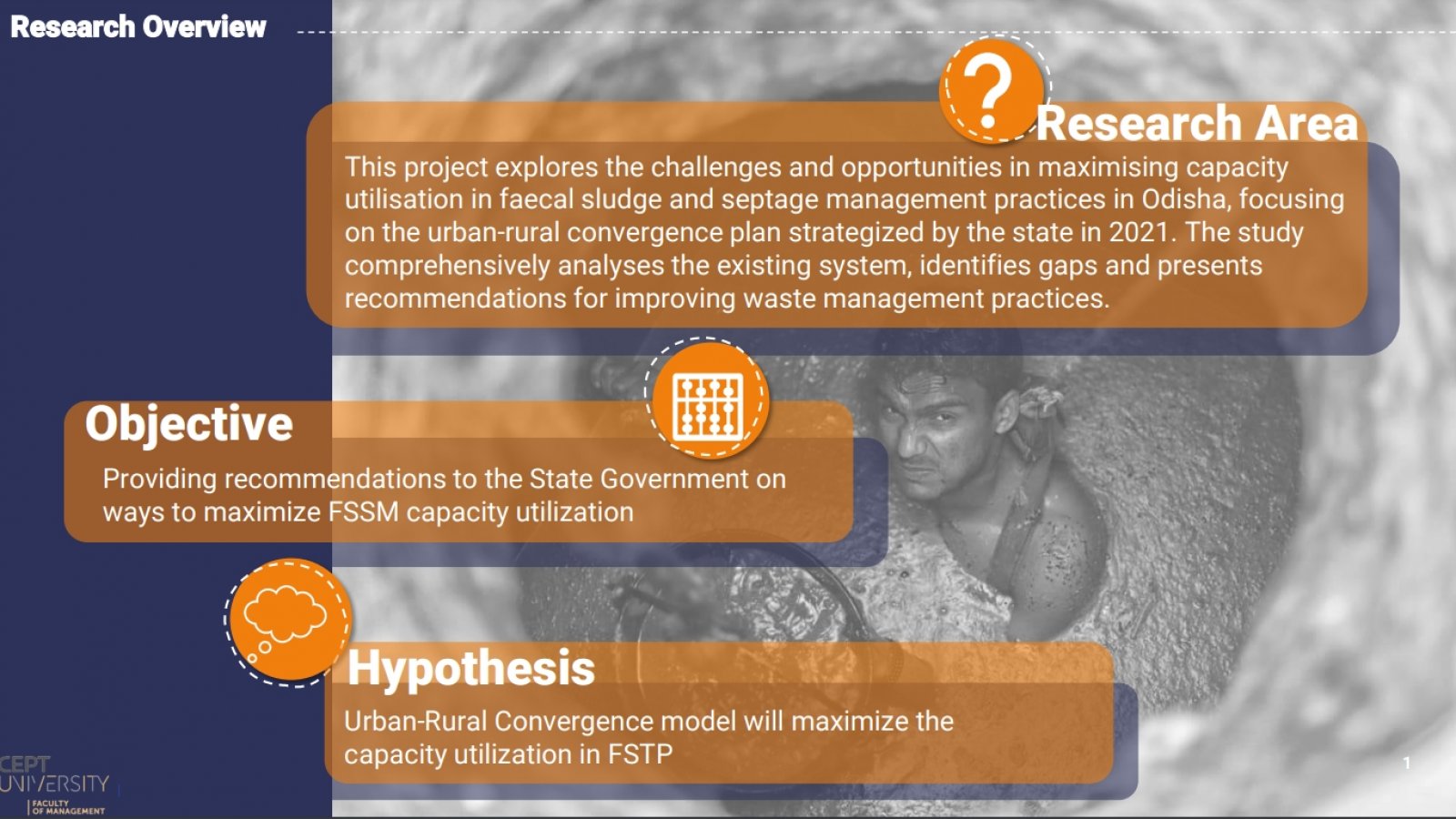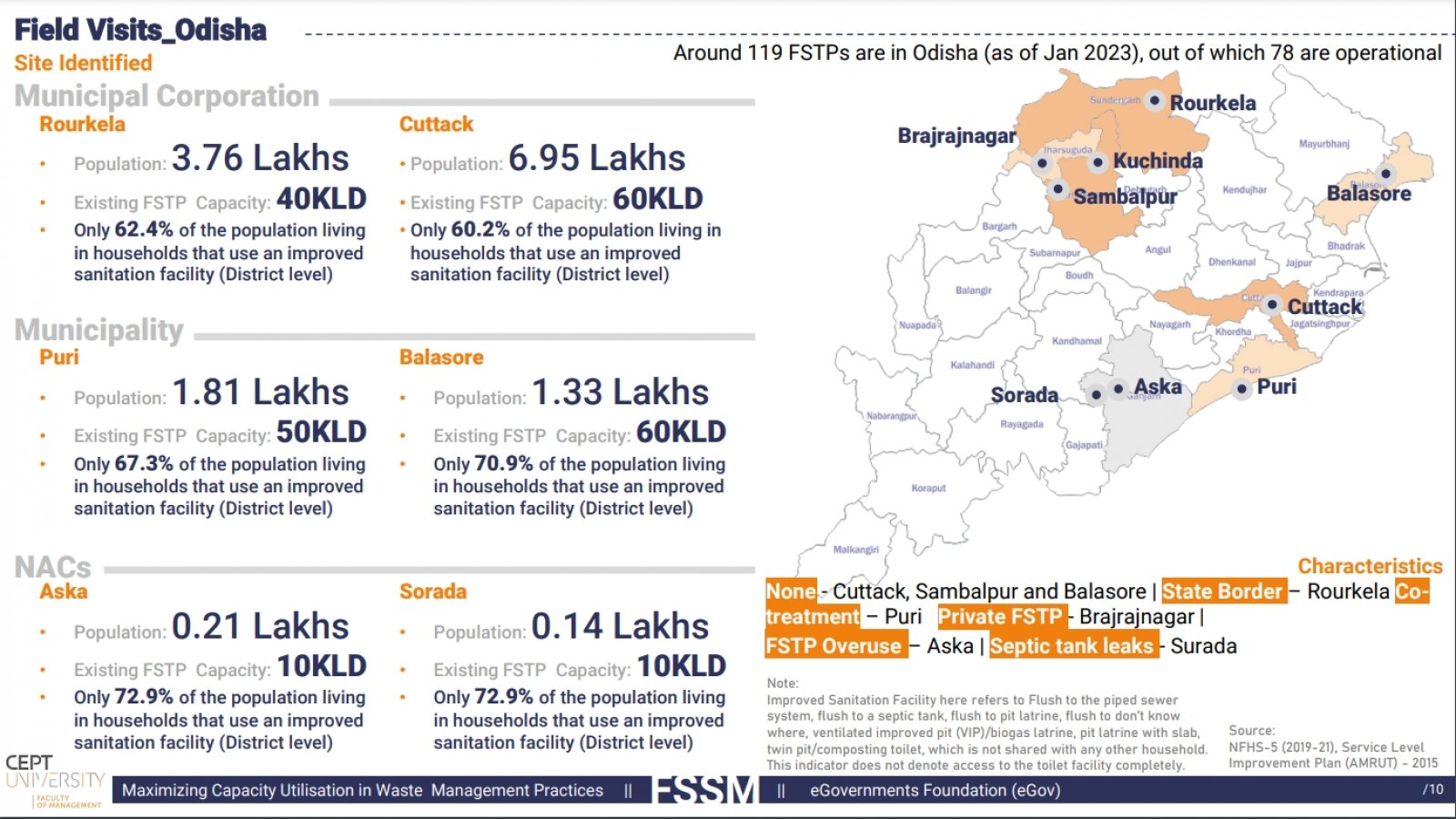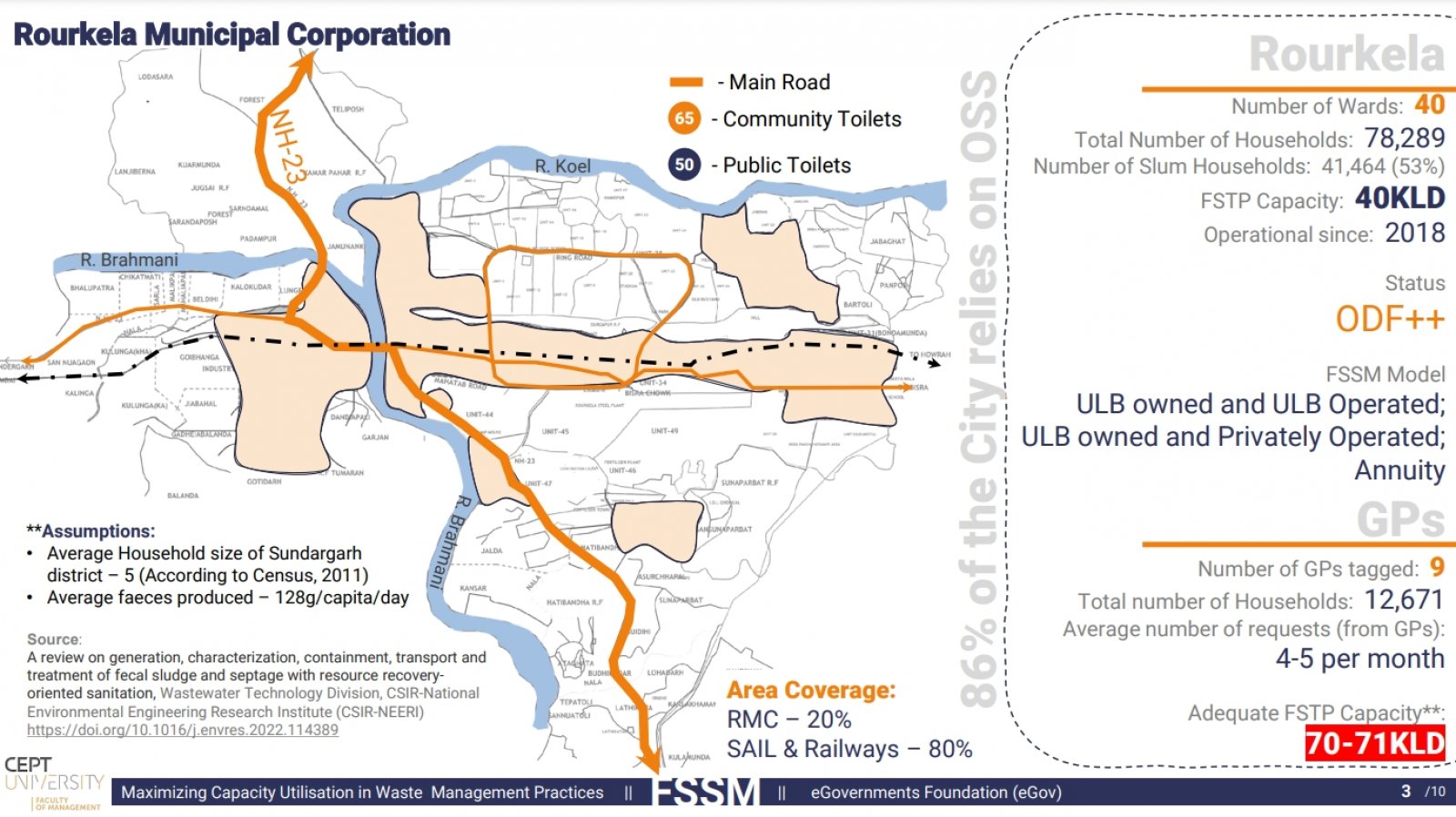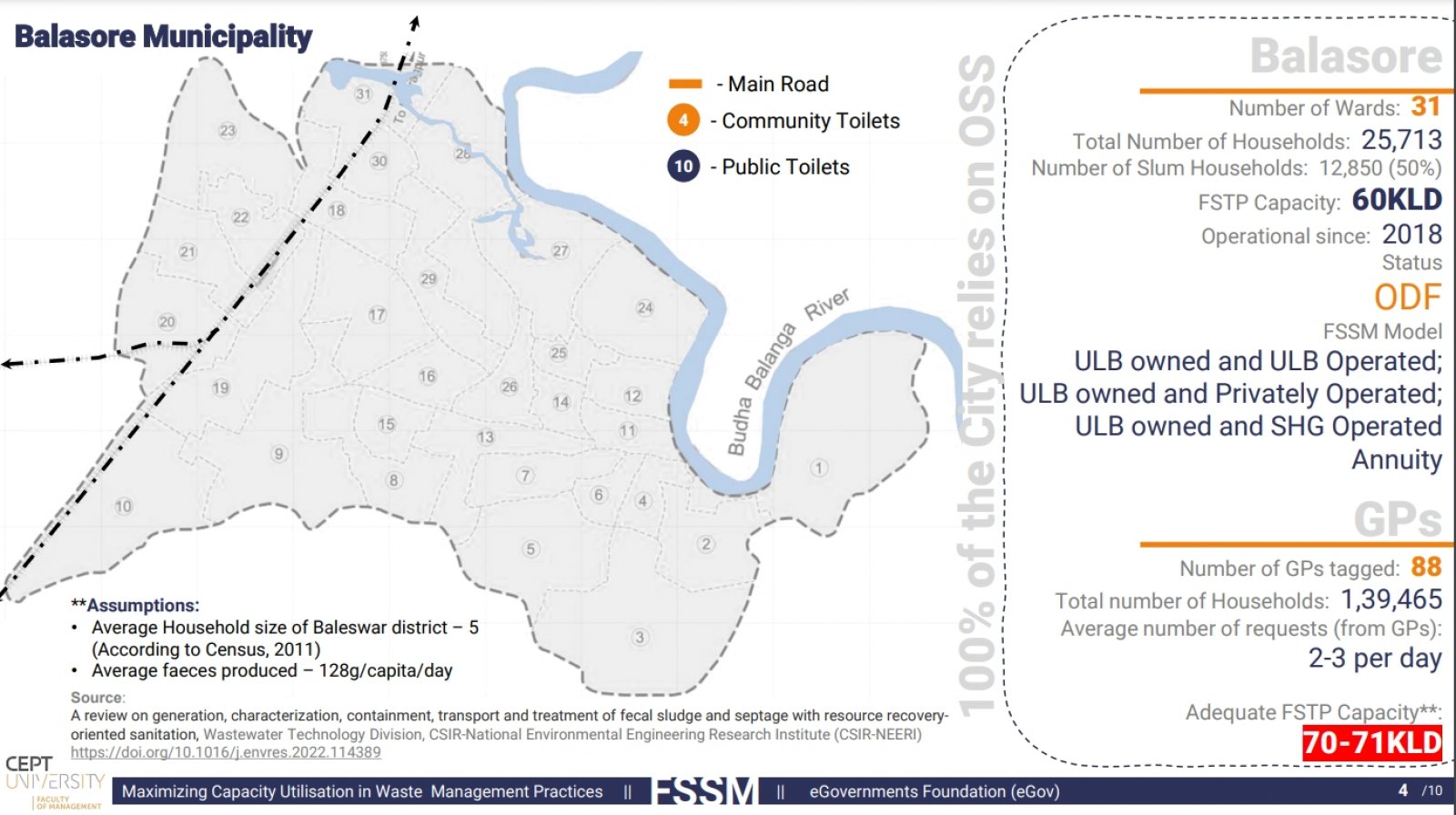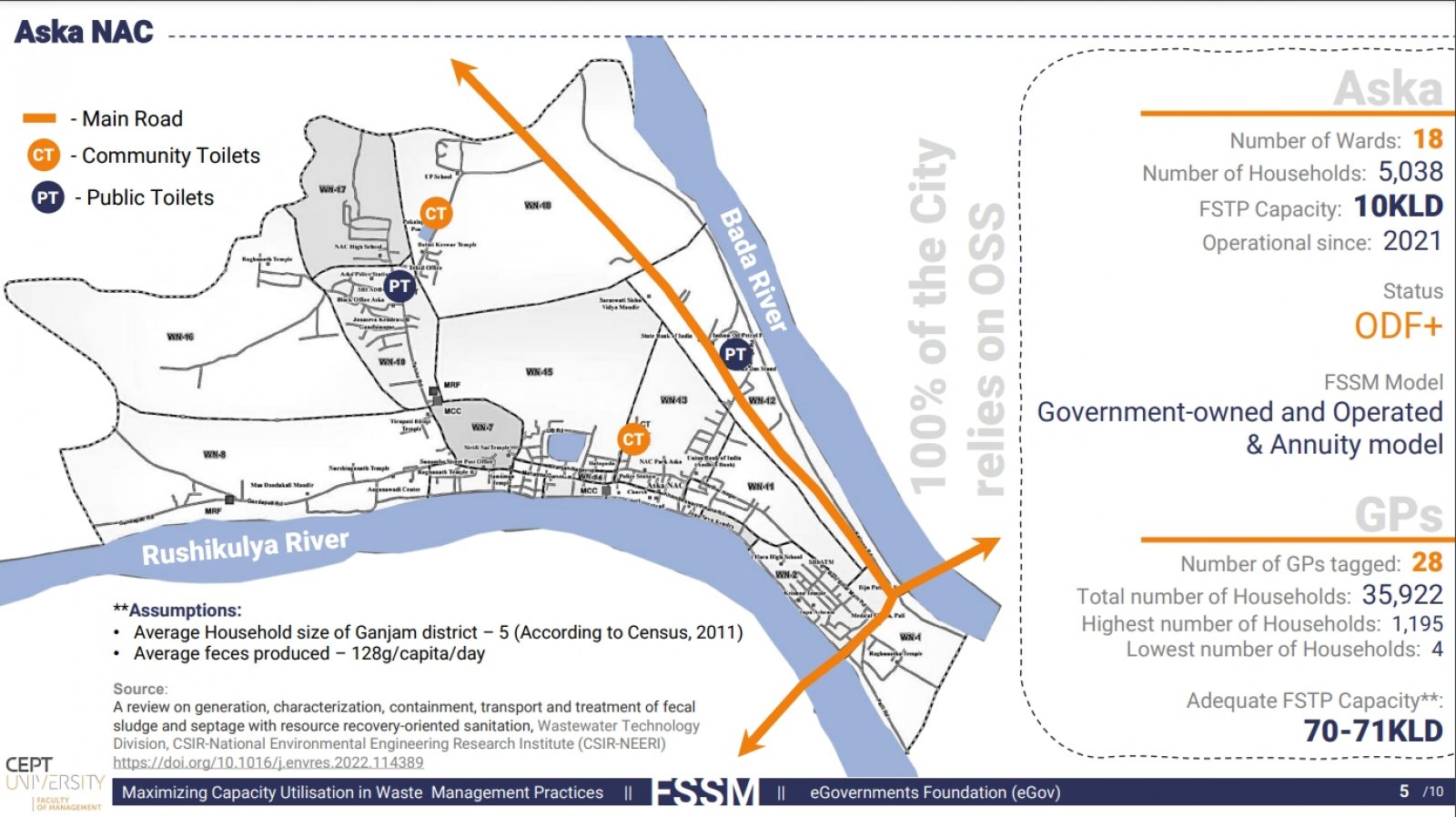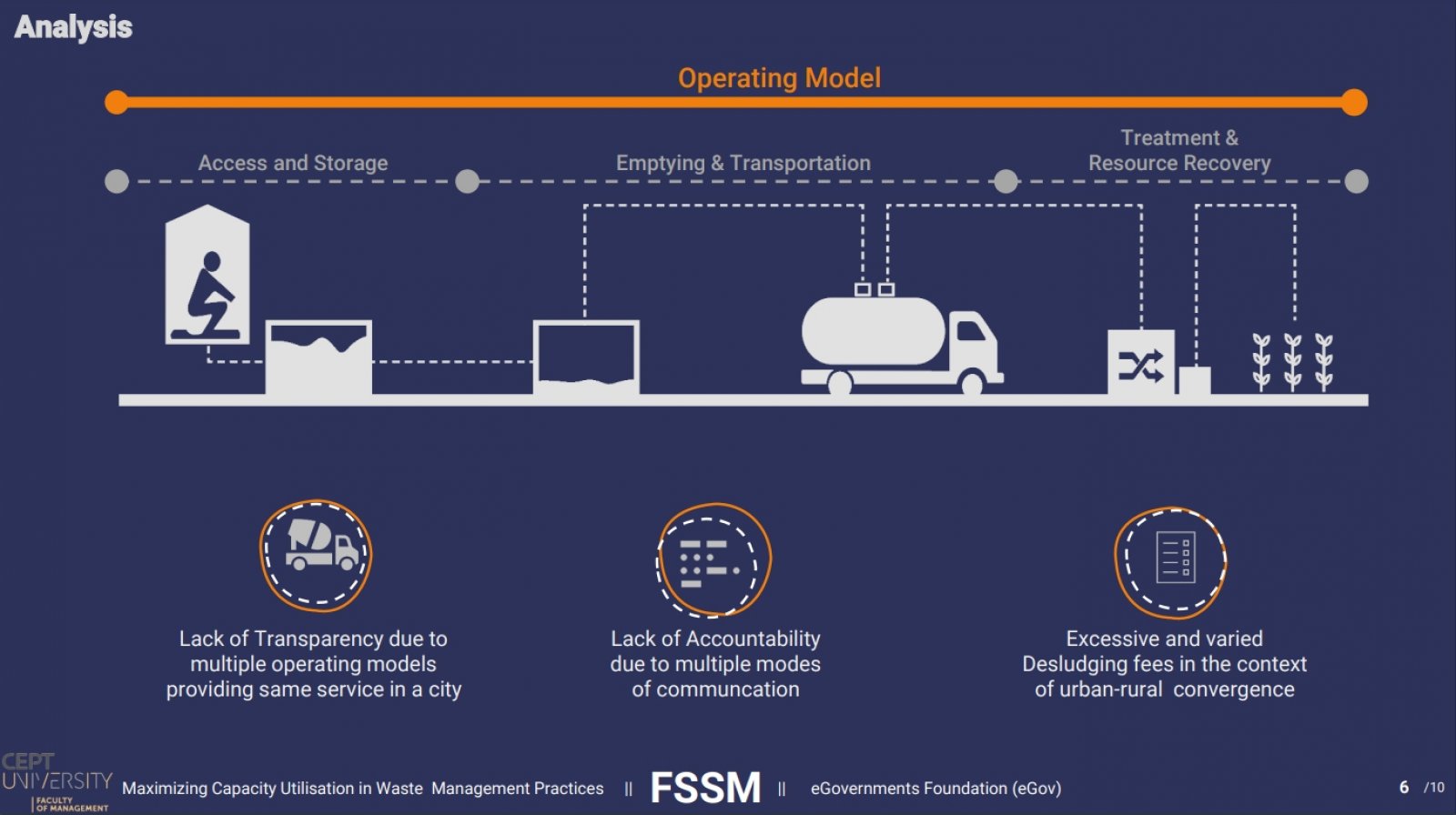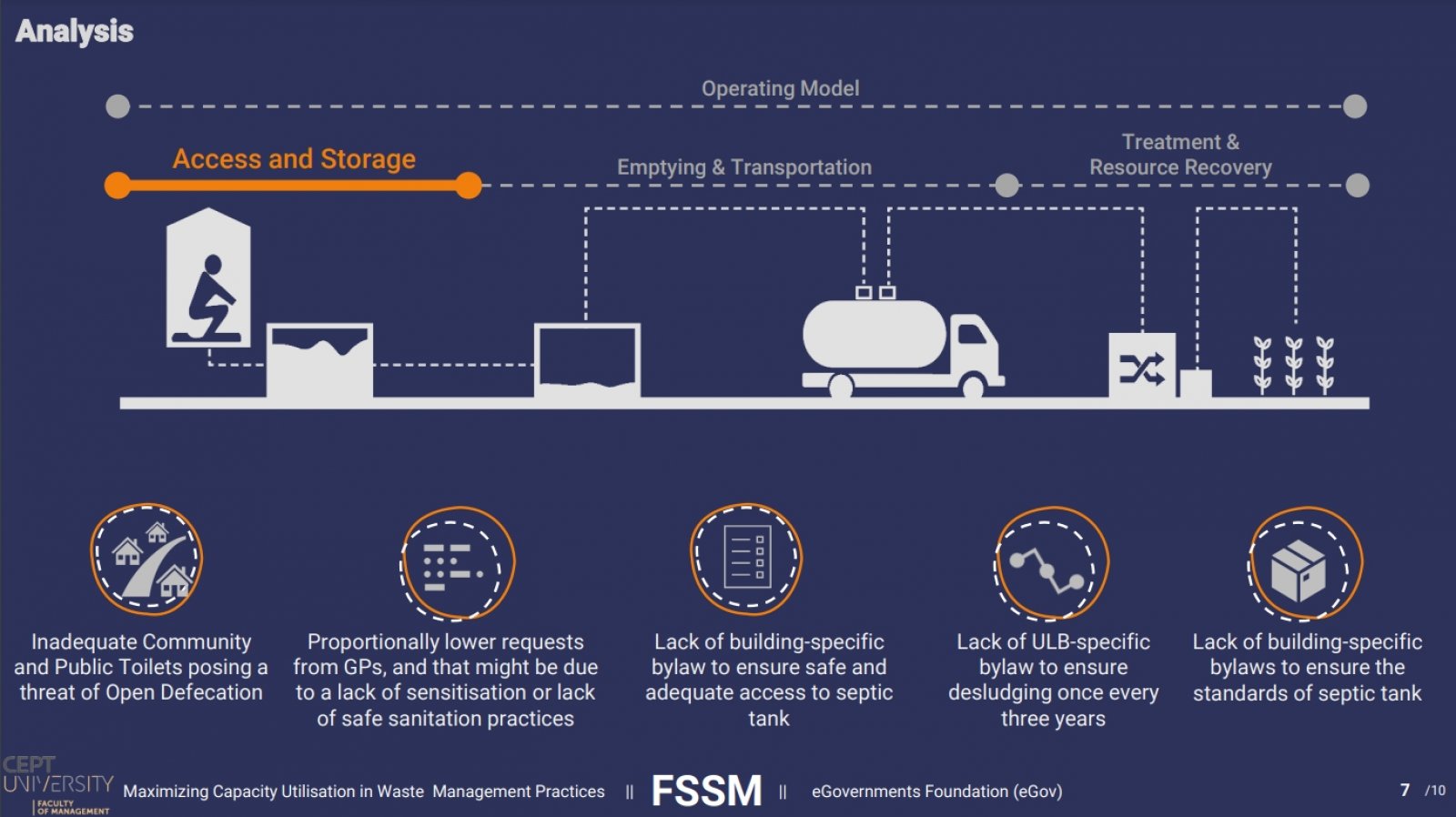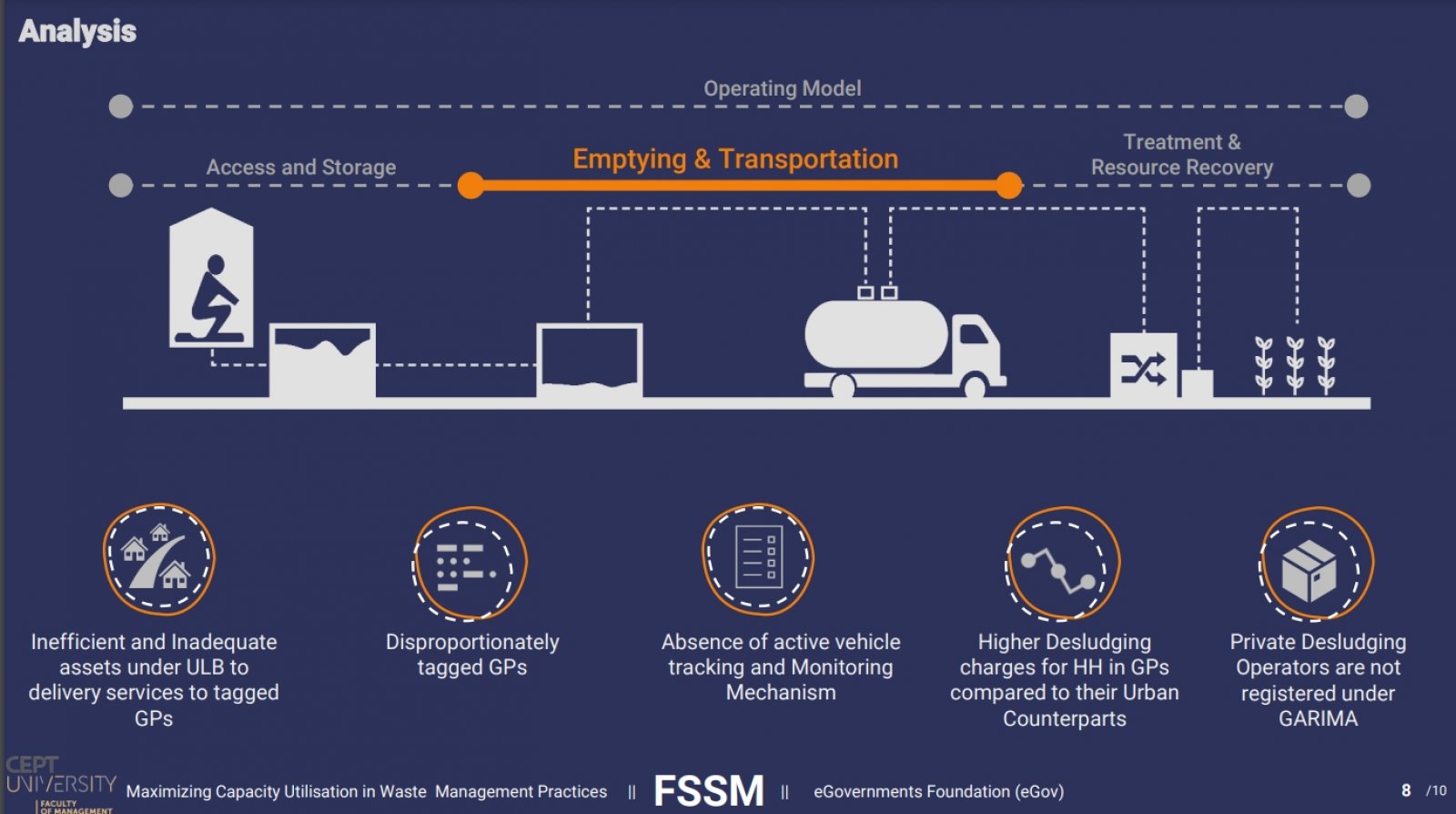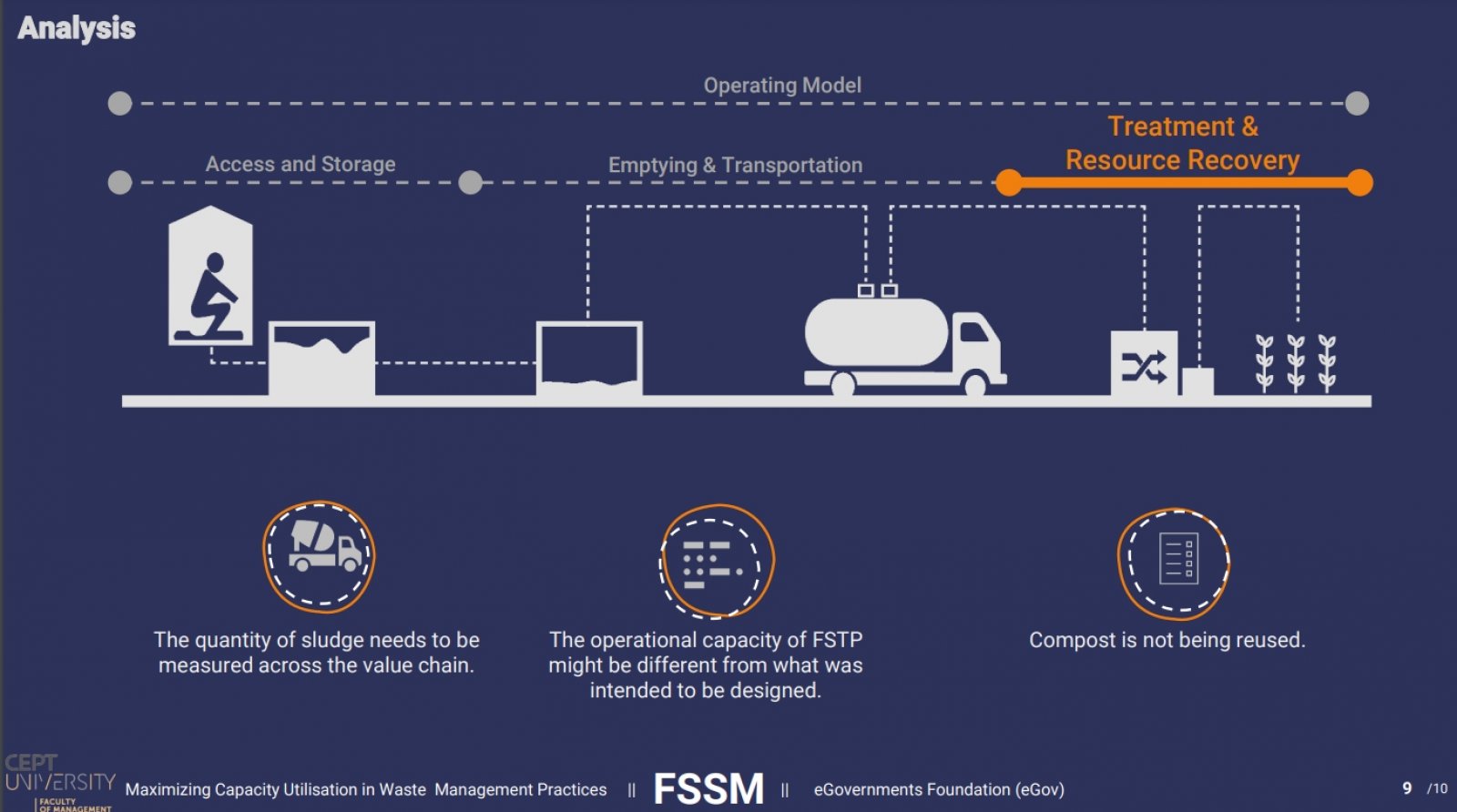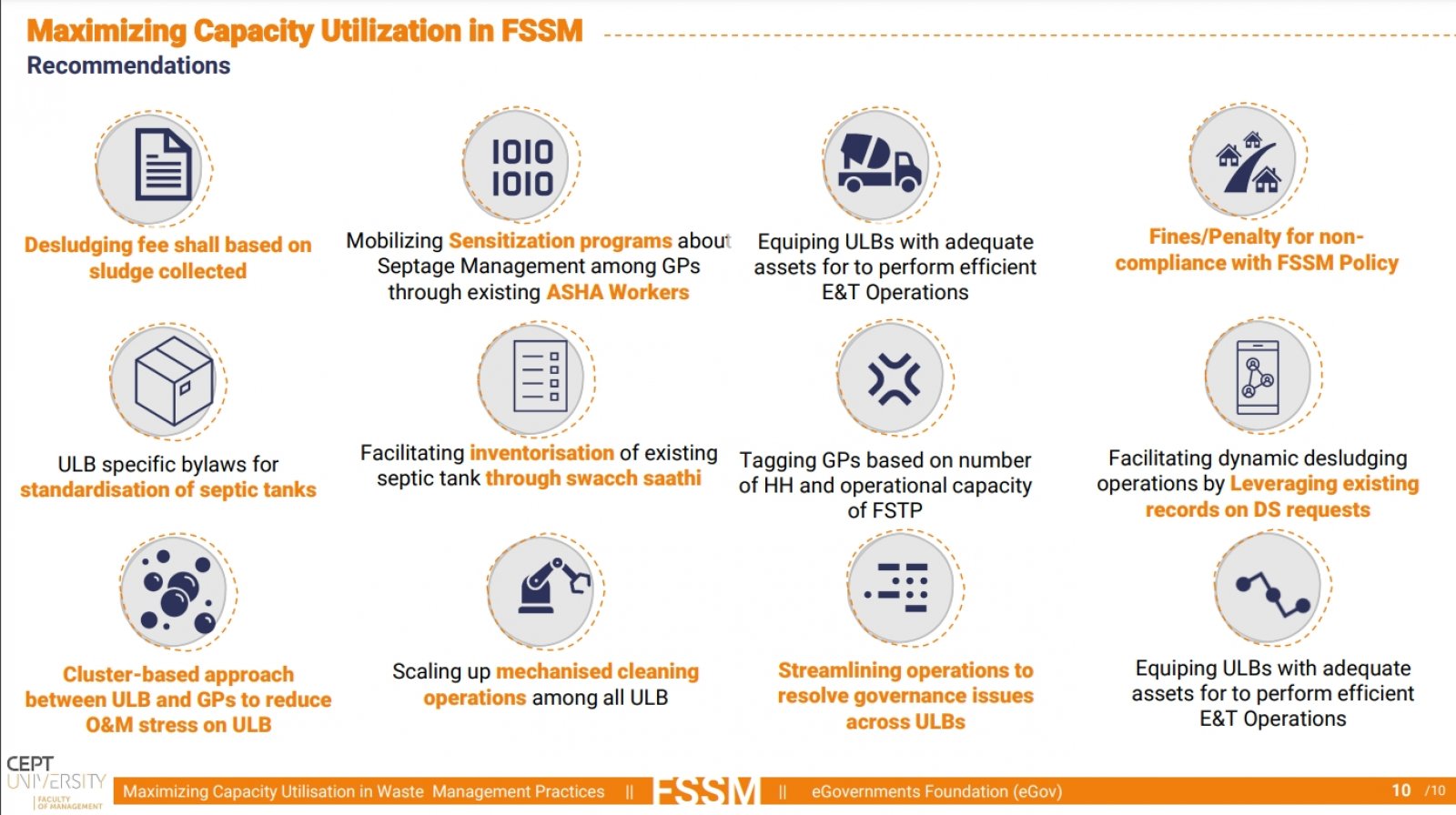Your browser is out-of-date!
For a richer surfing experience on our website, please update your browser. Update my browser now!
For a richer surfing experience on our website, please update your browser. Update my browser now!
This research project on Maximising Capacity Utilisation of Waste Management Practices focusses on Faecal Sludge and Septage Management in cities of Odisha, India, especially in the Urban Local Bodies (ULBs) where Urban-Rural Convergence model have been piloted. This strategy aimed to achieve economies of scale by extending the rural-urban horizon and optimising the capacity of treatment facilities. However, the study identified potential gaps and threats to the value chain in the Urban-Rural Convergence model and examined factors contributing to the underutilisation of Fecal Sludge Treatment Plants (FSTPs). The study also explored the role of technology in increasing the efficiency of resources involved in the value chain. The study used a formative research approach, including focus group discussions and in-depth interviews with key stakeholders involved in Fecal Sludge and Septage Management (FSSM) practices in urban India. The study involved five stages: a literature review and framework development, site visits and data analysis, and concluding with recommendations and an action plan. This approach provides valuable insights into FSSM practices in the identified cities and lays the groundwork for future effective waste management strategies. The research revealed that most of the FSTPs in the cities are utilised less than 55% of their actual operational capacity. It also identified reasons for utilisations which were caused due to multiple factors, including a lack of awareness among households in the Gram Panchayats (GPs), a lack of transparency and accountability on Desludging Service Operators operators involved in operations, and an absence of ULB-specific bylaws for FSSM. The study also explores how existing structures, such as social capital and social networks, can be leveraged to mobilise sensitisation programs inventorying septic tanks that would increase capacity utilisation. The initiatives proposed could be scaled across all the 115 ULBs and their tagged Gram Panchayats within the state. Despite its limitations, such as the reliance on Focus Group Discussions and In-Depth Interviews, the study concludes that the framework developed as part of the research can be replicable and scalable as it has identified parameters that could identify the obstacles hindering optimisation in the existing FSSM ecosystem and identifying solutions that can be implemented across all ULBs in the state. The study's policy recommendations provide a way forward for the capacity maximisation of FSTPs in its ULBs, enabling safe waste management practices and developing a comprehensive FSSM action plan. The study's findings have significant implications for improving waste management practices and promoting safe sanitation practices in the identified cities and beyond.
